How to eliminate Herodotus from infected Android devices
TrojanAlso Known As: Herodotus banking Trojan
Get free scan and check if your device is infected.
Remove it nowTo use full-featured product, you have to purchase a license for Combo Cleaner. Seven days free trial available. Combo Cleaner is owned and operated by RCS LT, the parent company of PCRisk.com.
What kind of malware is Herodotus?
Herodotus is Android malware that takes over devices and tries to imitate real human actions to evade behaviour-based security checks. It has already been used in attacks in Italy and Brazil, and a Malware-as-a-Service model has already been announced. There are indications that the malware may have additional features in the future.
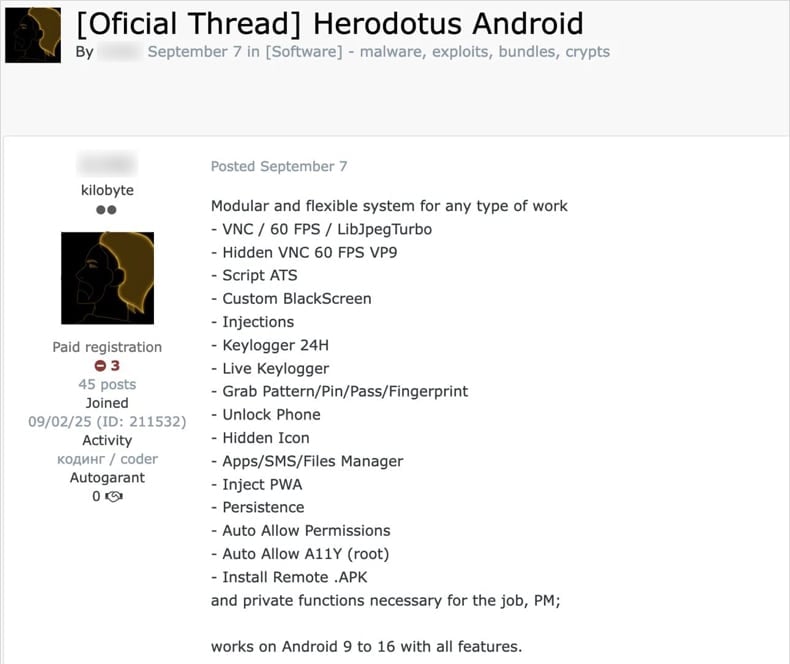
Herodotus in detail
Herodotus is distributed by sideloading, often via SMS messages that lure victims to a malicious link, which delivers a dropper. When executed, the dropper installs the payload in a way intended to evade Android 13 (and subsequent) restrictions on Accessibility Services. The dropper launches Herodotus and opens the Accessibility settings to push the victim to enable it.
Once granted, Herodotus shows a fake loading screen to hide permission abuse, then prepares to steal credentials and take over the device. It also sends the list of installed apps to its C2, receives specific targets and overlay pages, and waits for the victim to open one of those apps, where it will display a fake login screen to steal login details.
With Herodotus, cybercriminals can tap on items, press specific screen points, type text, swipe, and use system buttons like "Back", "Home", and "Recents", giving them full remote interaction with the device. This allows them to steal money by completing transactions on the victim's account.
When criminals enter text on a victim's device, they can type it manually using the device's keyboard or inject it directly into the input fields. Typing manually is slow, so many banking trojans use direct text injection to ensure the right text goes in instantly.
However, this method can look unnatural and trigger anti-fraud systems, so Herodotus tries to hide this by splitting the text into single characters and inserting random delays.
Also, Herodotus can show a blocking overlay, a fake screen placed over the real user interface that hides fraudulent activity from the victim while remaining partly visible to the attacker. A separate overlay command targets banking apps, keeping victims away from the app so they do not see transactions or contact their bank.
Herodotus can also show fake overlays that steal credentials, steal SMS to grab 2FA codes, and perform Accessibility-based keylogging to capture on‑screen data. Additionally, the malware can unlock infected devices, manage files, capture PINs, passwords, and biometric inputs, install remote APKs, and maintain persistence.
Herodotus has been masquerading as Banca Sicura in Italy and Modulo Seguranca Stone in Brazil to trick victims into installing it. Although other active attacks have not been confirmed yet, some overlays indicate that Herodotus is being prepared to target banks and crypto platforms in the US, Turkey, the UK, and Poland.
| Name | Herodotus banking Trojan |
| Threat Type | Android malware, malicious application, unwanted application. |
| Symptoms | The device is running slow, system settings are modified without user's permission, questionable applications appear, data and battery usage is increased significantly, browsers redirect to questionable websites, intrusive advertisements are delivered. |
| Distribution methods | Deceptive SMS messages, fake links, bogus banking applications. |
| Damage | Stolen personal information (private messages, logins/passwords, etc.), decreased device performance, battery is drained quickly, decreased Internet speed, monetary loss, stolen identity. |
| Malware Removal (Windows) |
To eliminate possible malware infections, scan your computer with legitimate antivirus software. Our security researchers recommend using Combo Cleaner. Download Combo CleanerTo use full-featured product, you have to purchase a license for Combo Cleaner. 7 days free trial available. Combo Cleaner is owned and operated by RCS LT, the parent company of PCRisk.com. |
Conclusion
Herodotus is a sophisticated Android banking Trojan that bypasses modern accessibility protections to gain persistent control of infected devices. It combines fake overlays, SMS interception, screen logging, and remote-control capabilities to steal credentials and carry out unauthorized transactions.
If detected on a device, Herodotus should be removed as soon as possible. Some examples of other banking Trojans targeting Android users are Klopatra, Datzbro, and RedHook.
How did Herodotus infiltrate my device?
Users typically get infected via sideloading. Victims receive a deceptive SMS that includes a link to a malicious dropper, which the victim downloads and installs. The dropper then installs and launches Herodotus. It is known that Herodotus often masquerades as a banking app (e.g., Banca Sicura or Modulo Seguranca Stone).
How to avoid installation of malware?
Download apps only from trusted sources like Google Play, the Apple App Store, or official websites. Update the operating system and installed applications regularly. Use reliable mobile security software. Avoid clicking links in suspicious emails, texts, or social media messages.
In addition, do not click links, ads, pop-ups, buttons, etc., on suspicious websites.
A fake overlay window displayed by the malware (source: threatfabric.com):

Administration panel (source: threatfabric.com):
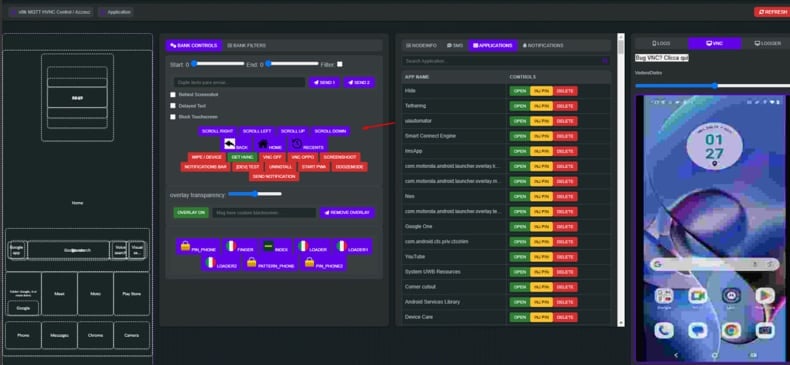
Quick menu:
- Introduction
- How to delete browsing history from the Chrome web browser?
- How to disable browser notifications in the Chrome web browser?
- How to reset the Chrome web browser?
- How to delete browsing history from the Firefox web browser?
- How to disable browser notifications in the Firefox web browser?
- How to reset the Firefox web browser?
- How to uninstall potentially unwanted and/or malicious applications?
- How to boot the Android device in "Safe Mode"?
- How to check the battery usage of various applications?
- How to check the data usage of various applications?
- How to install the latest software updates?
- How to reset the system to its default state?
- How to disable applications that have administrator privileges?
Delete browsing history from the Chrome web browser:
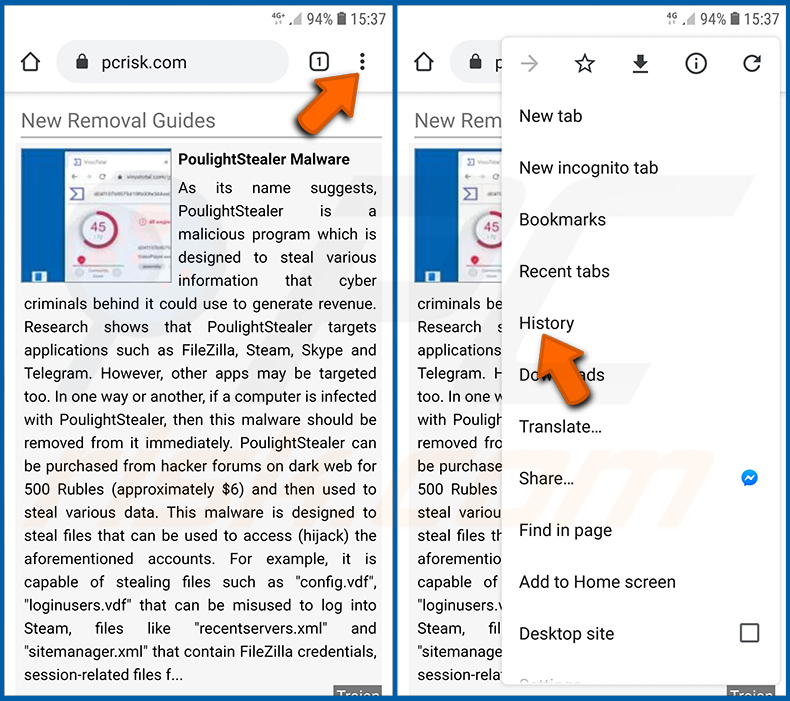
Tap the "Menu" button (three dots on the right-upper corner of the screen) and select "History" in the opened dropdown menu.
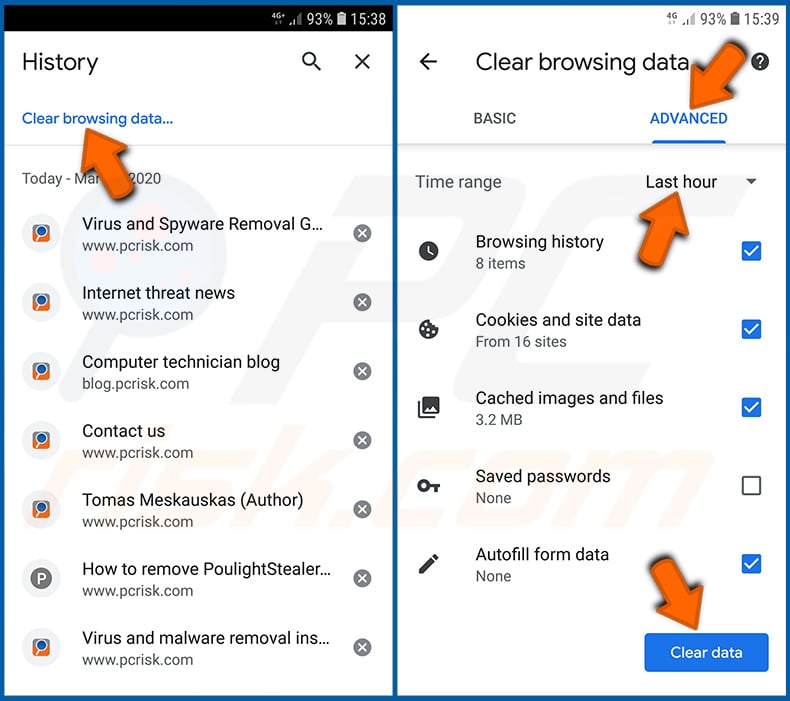
Tap "Clear browsing data", select "ADVANCED" tab, choose the time range and data types you want to delete and tap "Clear data".
Disable browser notifications in the Chrome web browser:
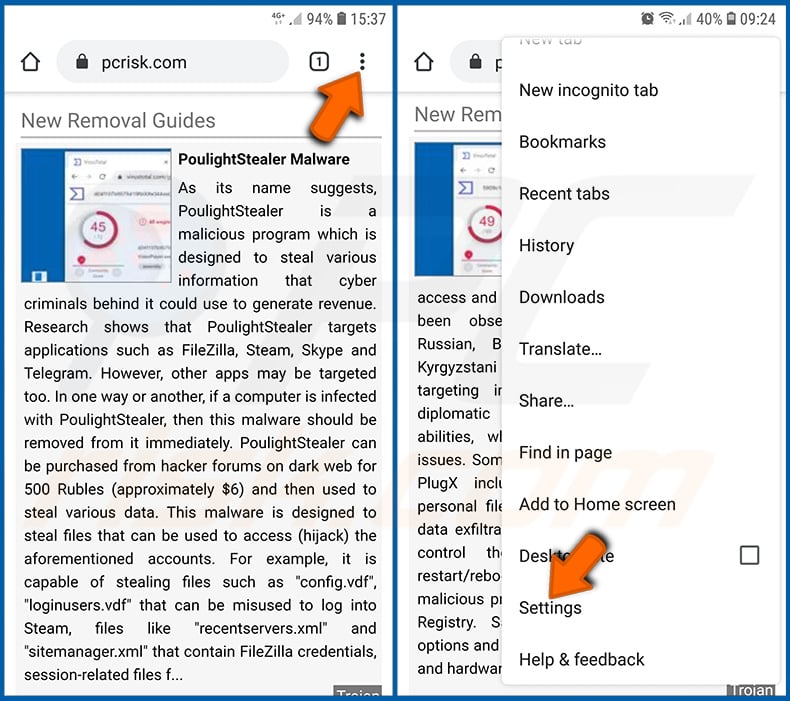
Tap the "Menu" button (three dots on the right-upper corner of the screen) and select "Settings" in the opened dropdown menu.
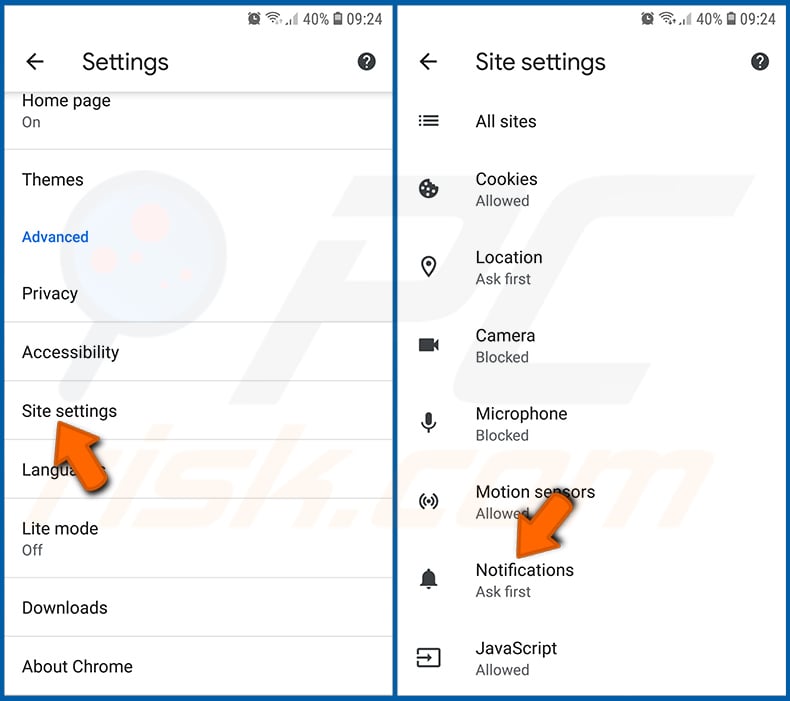
Scroll down until you see "Site settings" option and tap it. Scroll down until you see "Notifications" option and tap it.
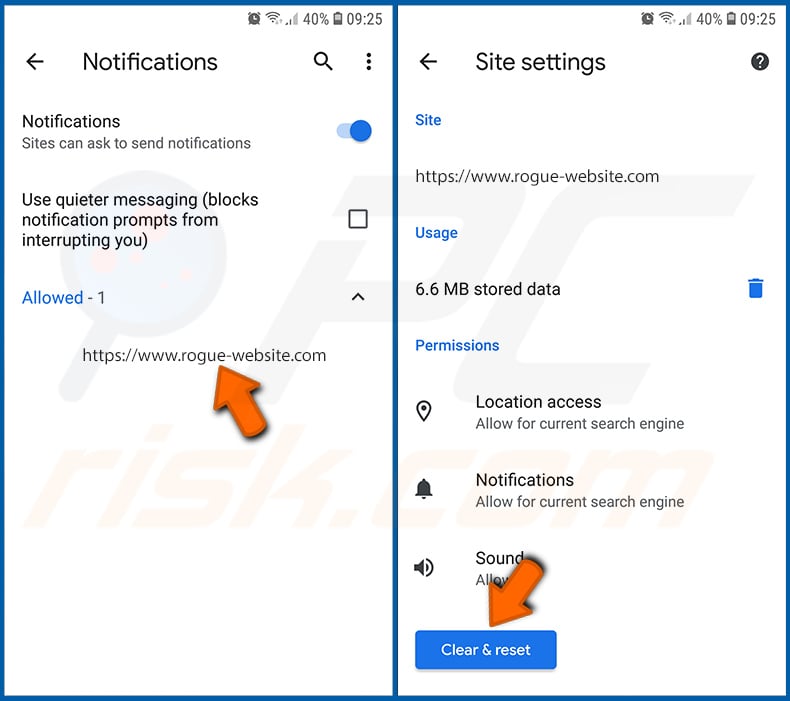
Find the websites that deliver browser notifications, tap on them and click "Clear & reset". This will remove permissions granted for these websites to deliver notifications. However, once you visit the same site again, it may ask for a permission again. You can choose whether to give these permissions or not (if you choose to decline the website will go to "Blocked" section and will no longer ask you for the permission).
Reset the Chrome web browser:
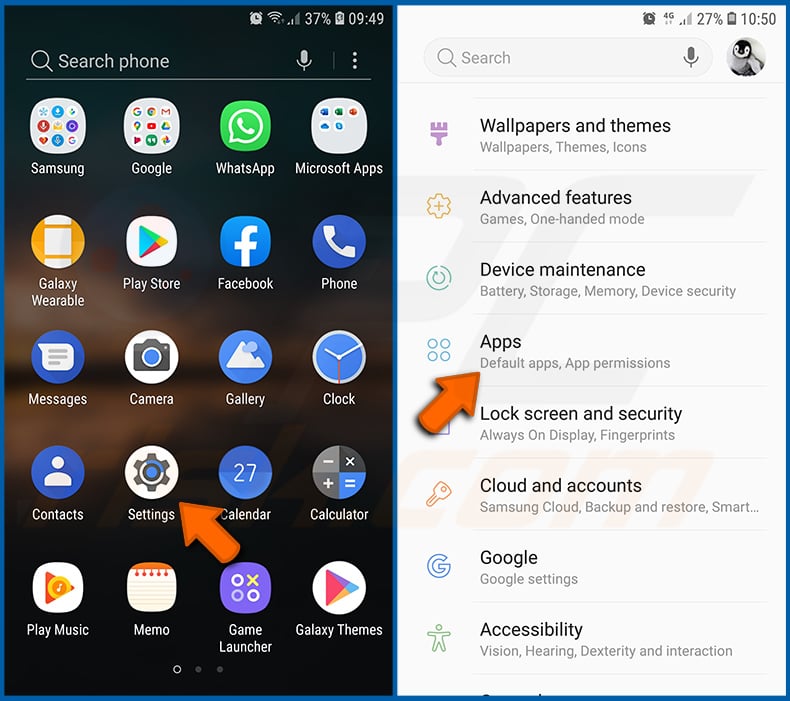
Go to "Settings", scroll down until you see "Apps" and tap it.
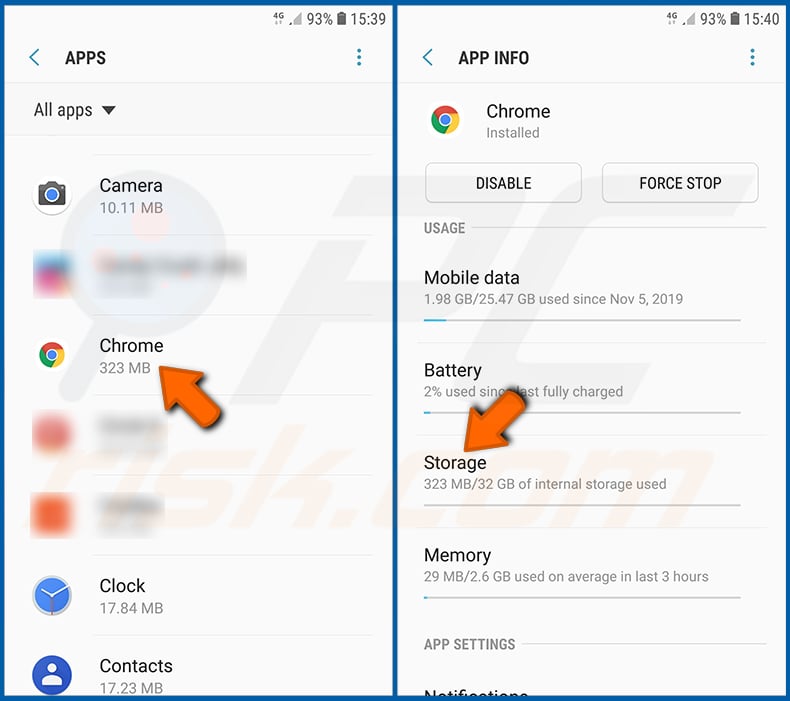
Scroll down until you find "Chrome" application, select it and tap "Storage" option.
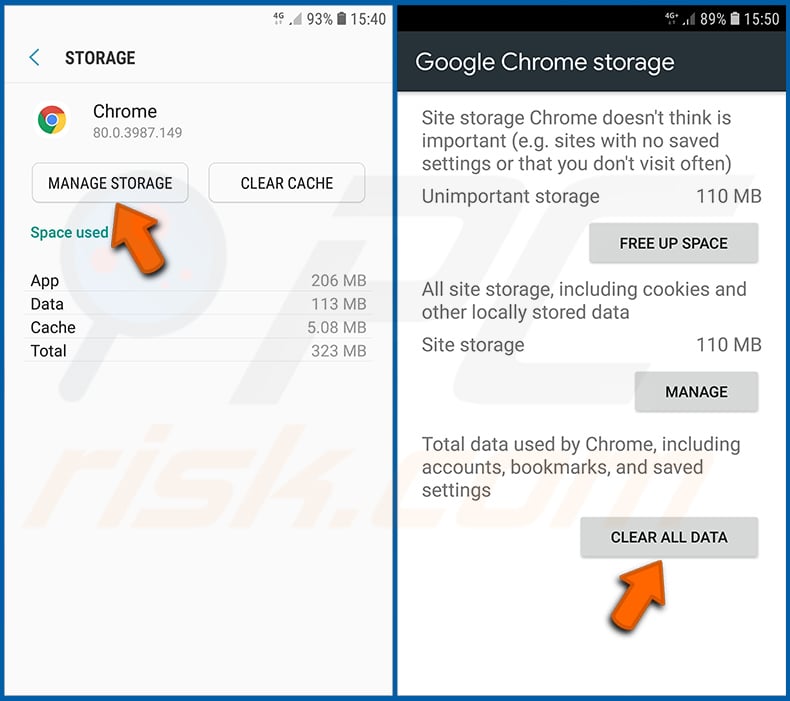
Tap "MANAGE STORAGE", then "CLEAR ALL DATA" and confirm the action by taping "OK". Note that resetting the browser will eliminate all data stored within. This means that all saved logins/passwords, browsing history, non-default settings and other data will be deleted. You will also have to re-login into all websites as well.
Delete browsing history from the Firefox web browser:
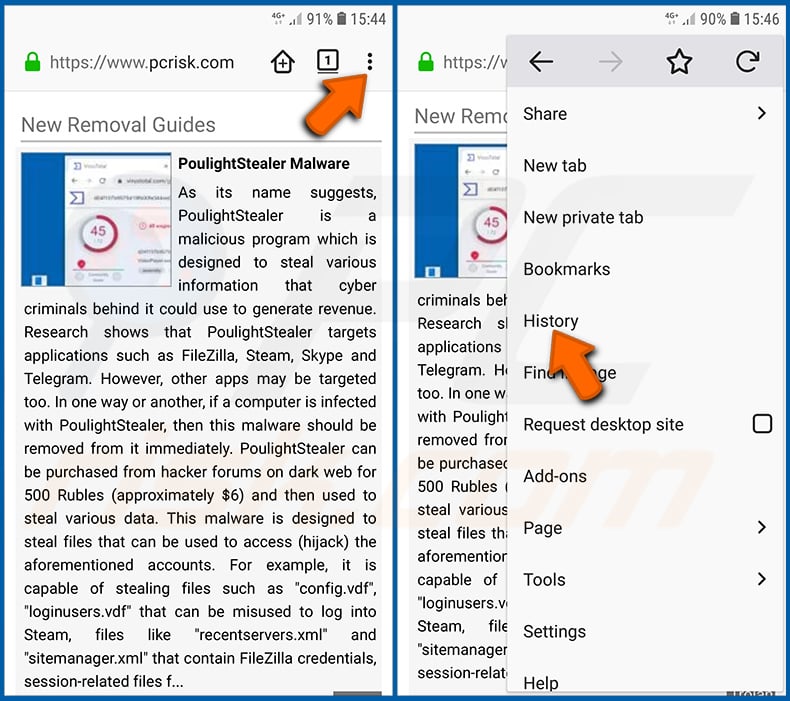
Tap the "Menu" button (three dots on the right-upper corner of the screen) and select "History" in the opened dropdown menu.
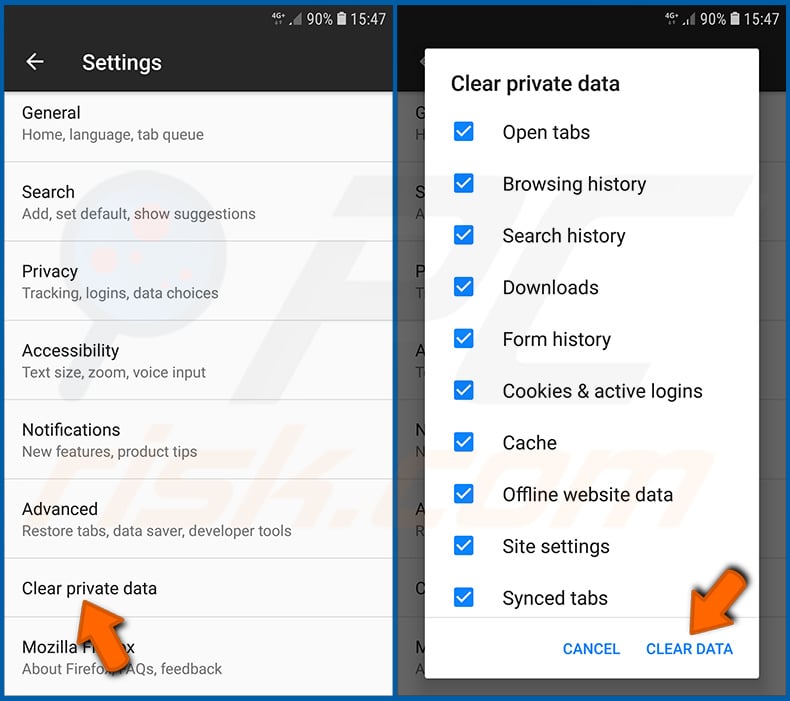
Scroll down until you see "Clear private data" and tap it. Select data types you want to remove and tap "CLEAR DATA".
Disable browser notifications in the Firefox web browser:
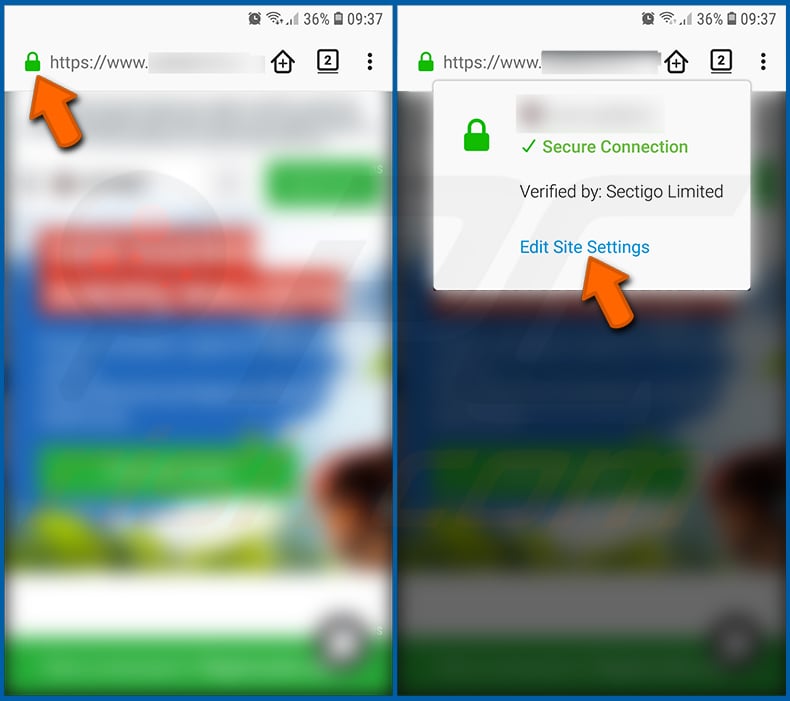
Visit the website that is delivering browser notifications, tap the icon displayed on the left of URL bar (the icon will not necessarily be a "Lock") and select "Edit Site Settings".
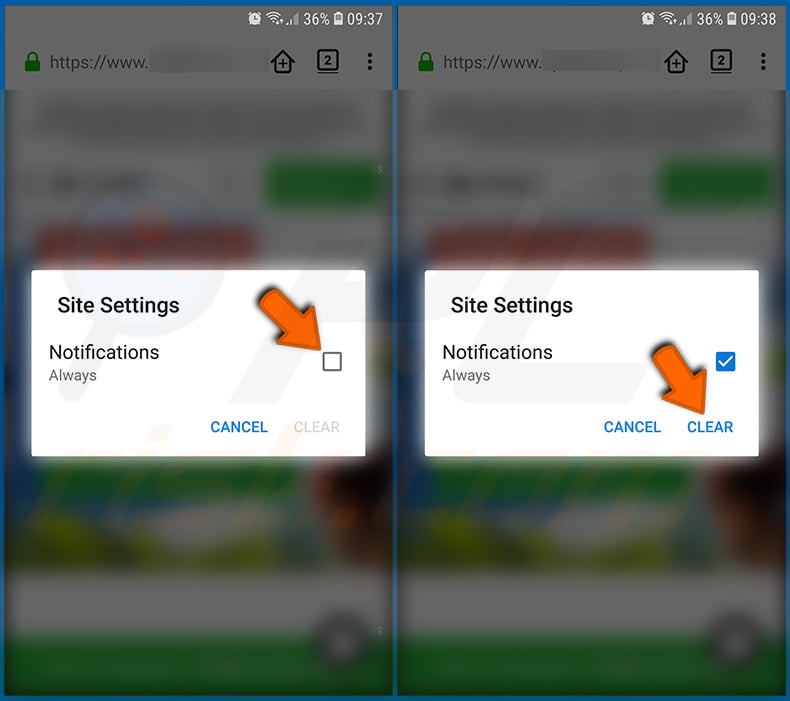
In the opened pop-up opt-in the "Notifications" option and tap "CLEAR".
Reset the Firefox web browser:
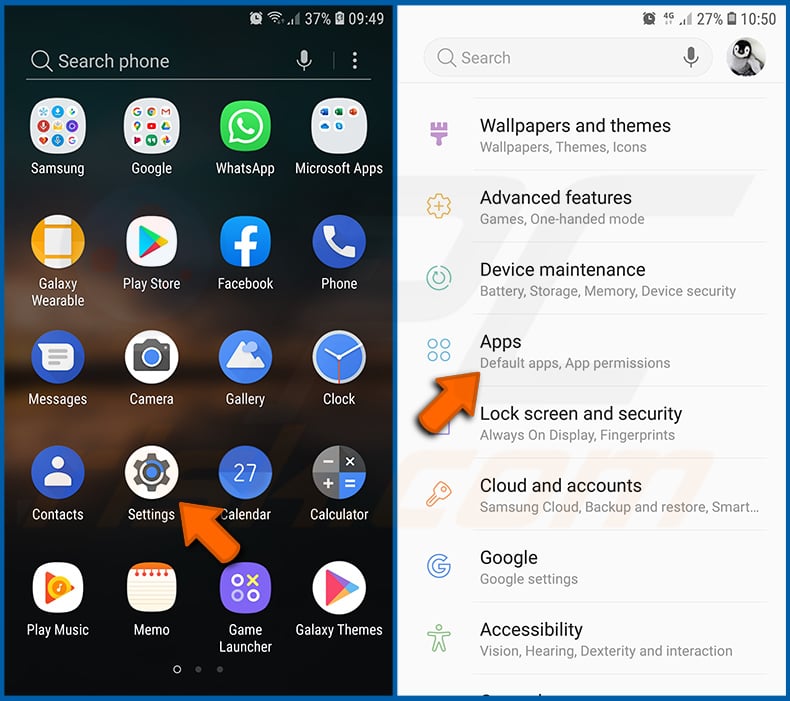
Go to "Settings", scroll down until you see "Apps" and tap it.
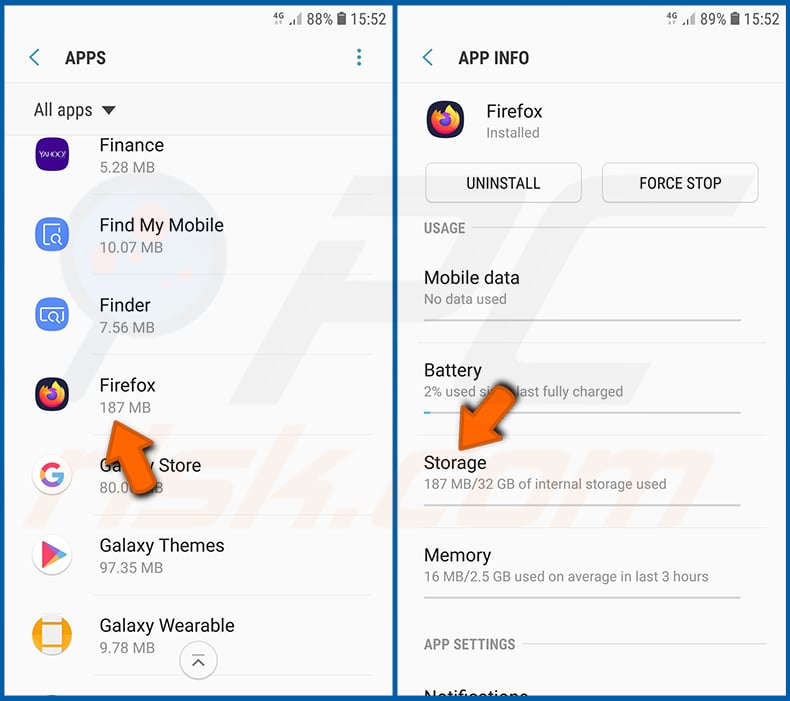
Scroll down until you find "Firefox" application, select it and tap "Storage" option.
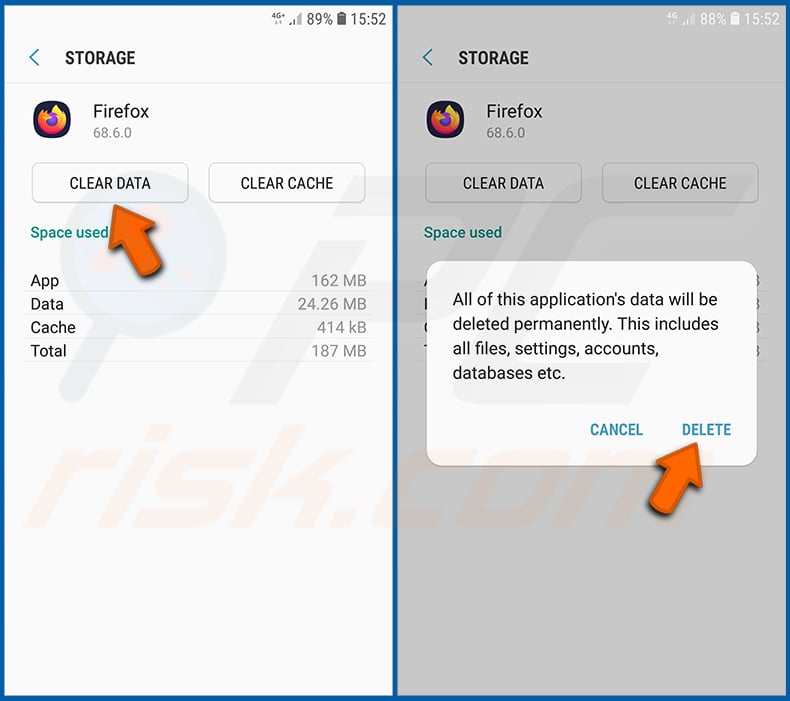
Tap "CLEAR DATA" and confirm the action by taping "DELETE". Note that resetting the browser will eliminate all data stored within. This means that all saved logins/passwords, browsing history, non-default settings and other data will be deleted. You will also have to re-login into all websites as well.
Uninstall potentially unwanted and/or malicious applications:
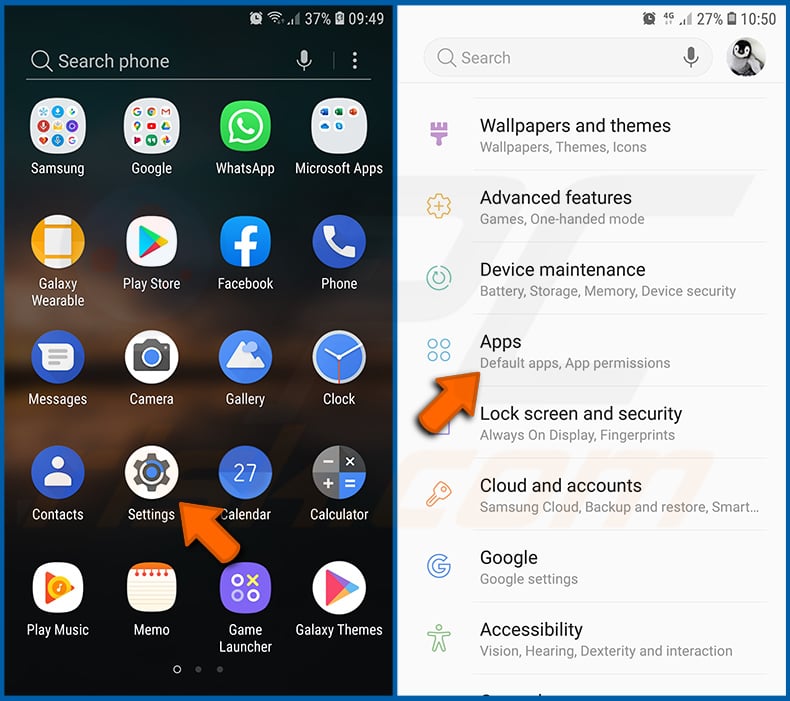
Go to "Settings", scroll down until you see "Apps" and tap it.
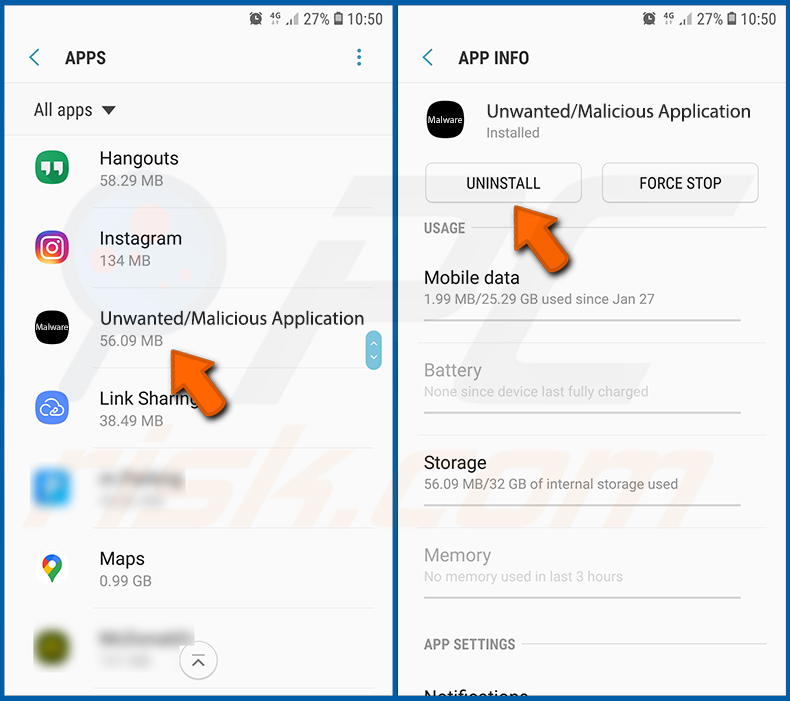
Scroll down until you see a potentially unwanted and/or malicious application, select it and tap "Uninstall". If, for some reason, you are unable to remove the selected app (e.g., you are prompted with an error message), you should try using the "Safe Mode".
Boot the Android device in "Safe Mode":
The "Safe Mode" in Android operating system temporarily disables all third-party applications from running. Using this mode is a good way to diagnose and solve various issues (e.g., remove malicious applications that prevent users you from doing so when the device is running "normally").
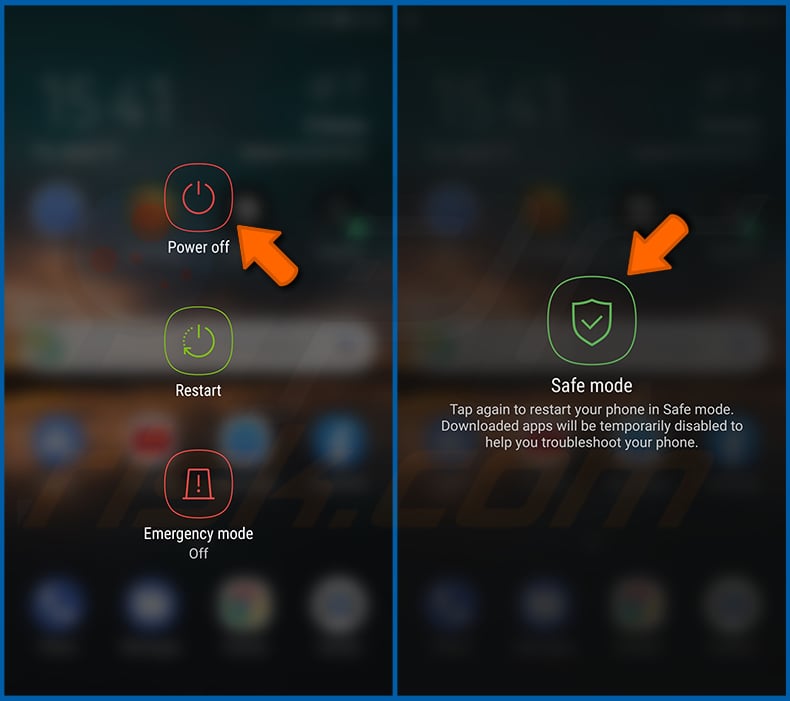
Push the "Power" button and hold it until you see the "Power off" screen. Tap the "Power off" icon and hold it. After a few seconds the "Safe Mode" option will appear and you'll be able run it by restarting the device.
Check the battery usage of various applications:
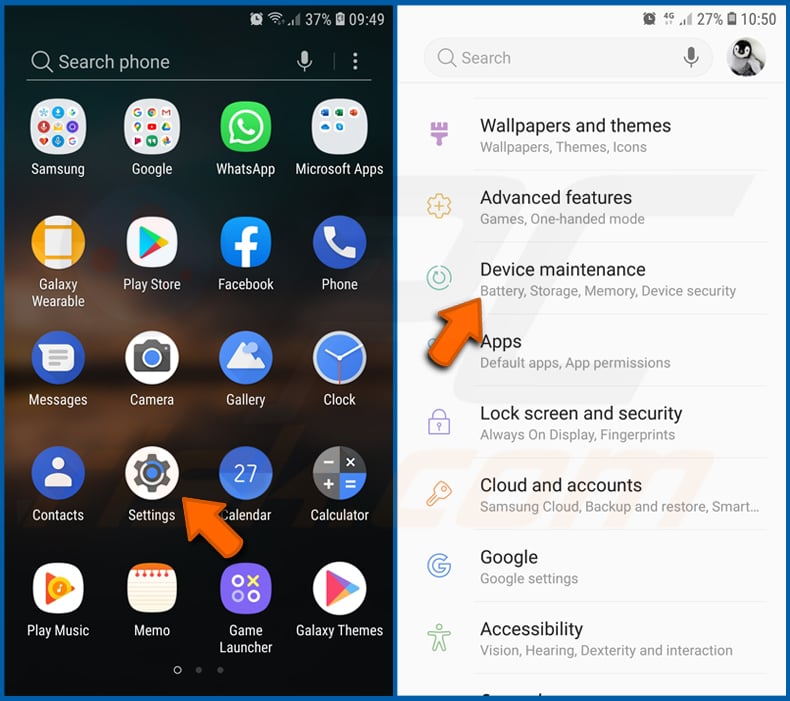
Go to "Settings", scroll down until you see "Device maintenance" and tap it.
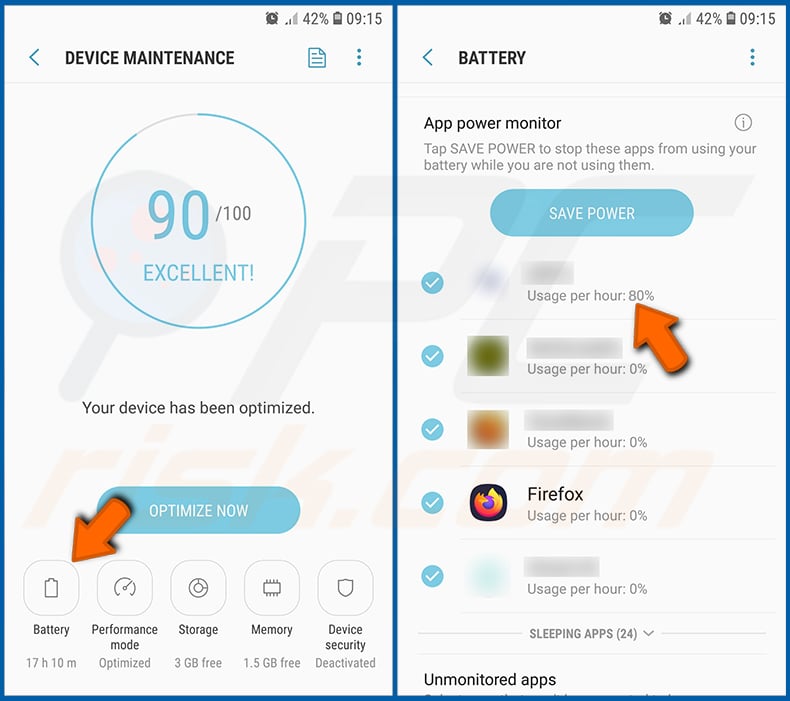
Tap "Battery" and check the usage of each application. Legitimate/genuine applications are designed to use as low energy as possible in order to provide the best user experience and to save power. Therefore, high battery usage may indicate that the application is malicious.
Check the data usage of various applications:
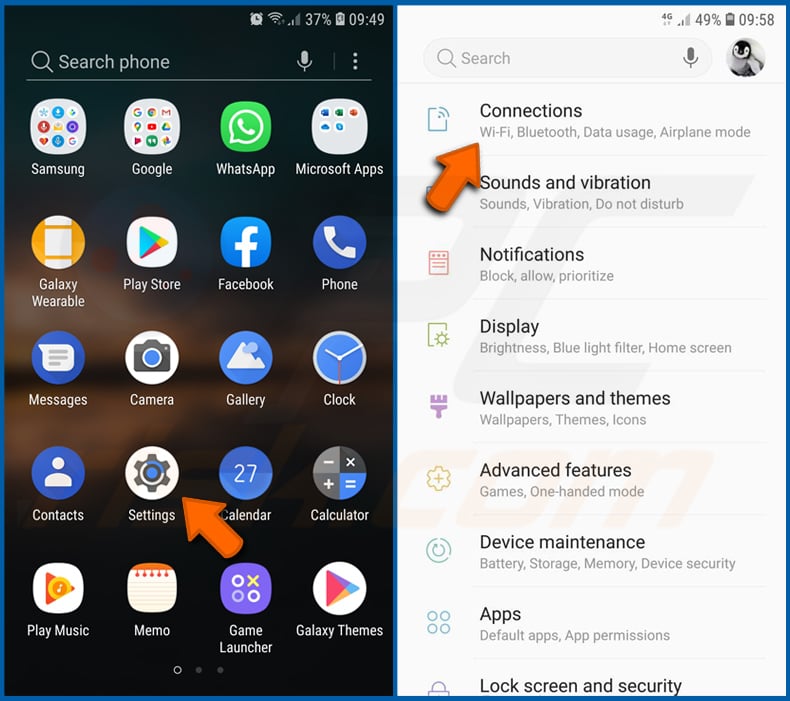
Go to "Settings", scroll down until you see "Connections" and tap it.
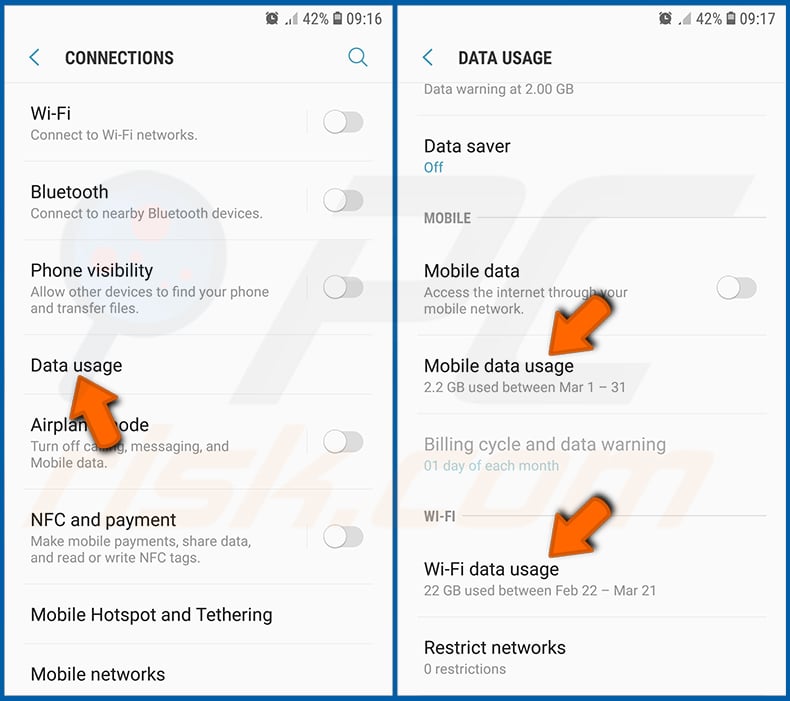
Scroll down until you see "Data usage" and select this option. As with battery, legitimate/genuine applications are designed to minimize data usage as much as possible. This means that huge data usage may indicate presence of malicious application. Note that some malicious applications might be designed to operate when the device is connected to wireless network only. For this reason, you should check both Mobile and Wi-Fi data usage.
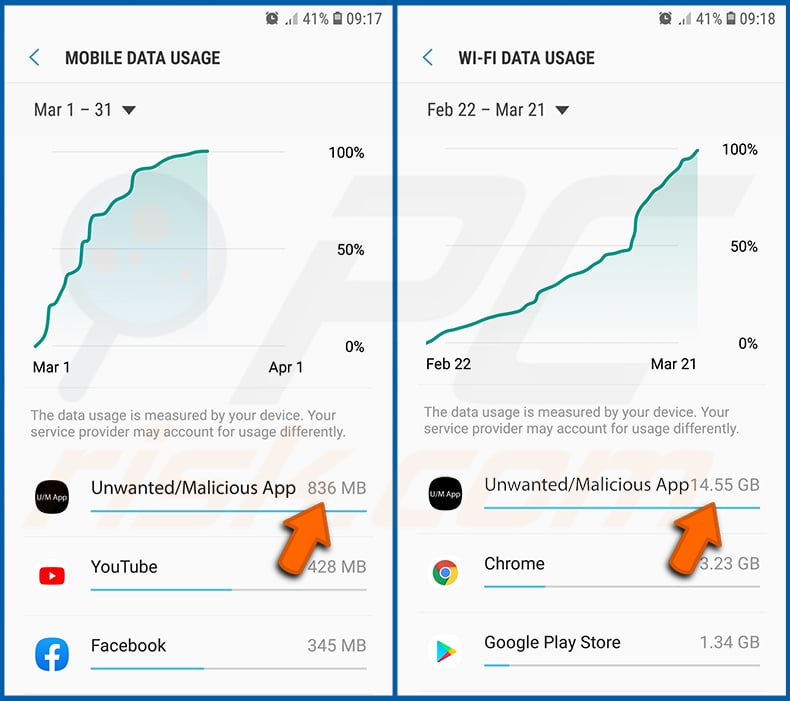
If you find an application that uses a lot of data even though you never use it, then we strongly advise you to uninstall it as soon as possible.
Install the latest software updates:
Keeping the software up-to-date is a good practice when it comes to device safety. The device manufacturers are continually releasing various security patches and Android updates in order to fix errors and bugs that can be abused by cyber criminals. An outdated system is way more vulnerable, which is why you should always be sure that your device's software is up-to-date.
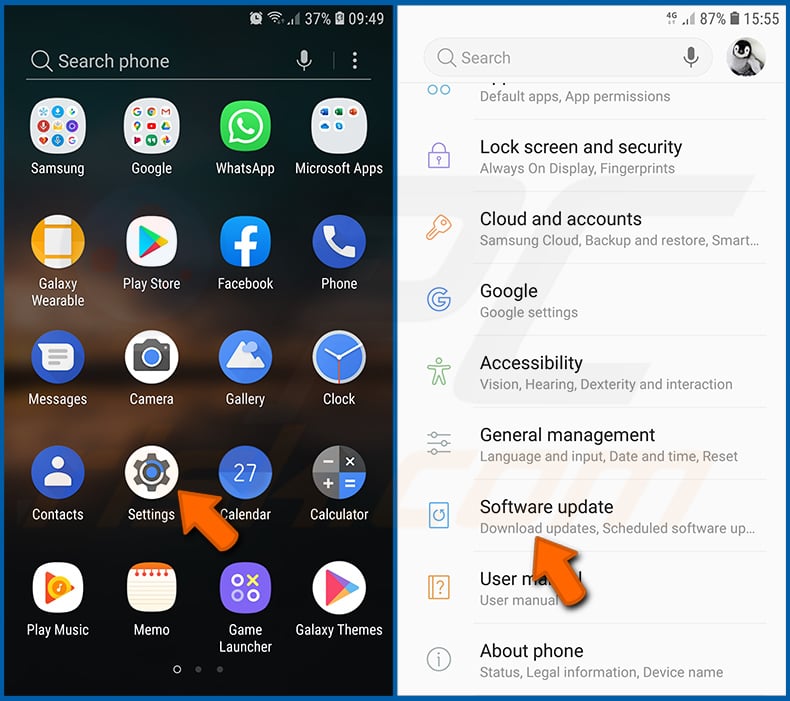
Go to "Settings", scroll down until you see "Software update" and tap it.
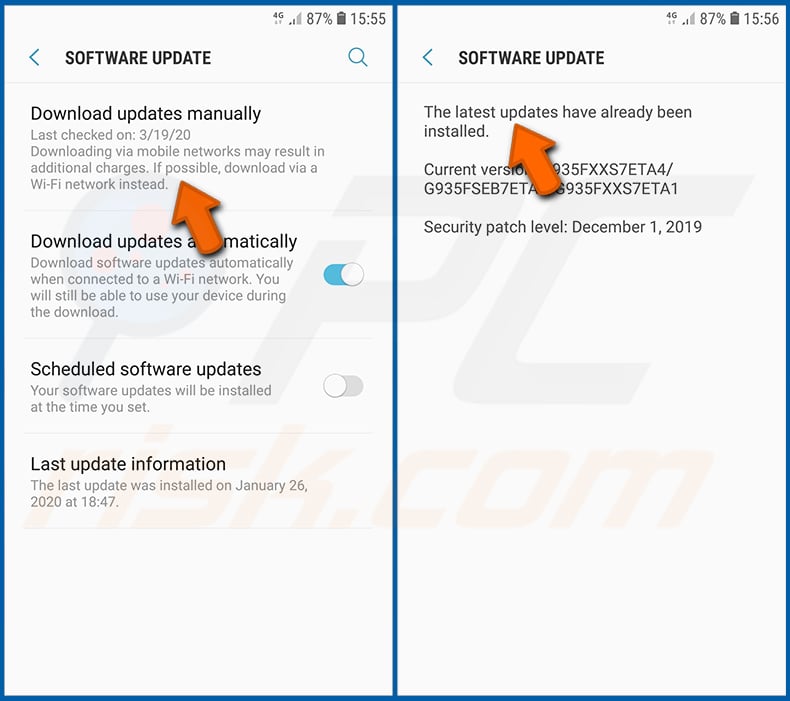
Tap "Download updates manually" and check if there are any updates available. If so, install them immediately. We also recommend to enable the "Download updates automatically" option - it will enable the system to notify you once an update is released and/or install it automatically.
Reset the system to its default state:
Performing a "Factory Reset" is a good way to remove all unwanted applications, restore system's settings to default and clean the device in general. However, you must keep in mind that all data within the device will be deleted, including photos, video/audio files, phone numbers (stored within the device, not the SIM card), SMS messages, and so forth. In other words, the device will be restored to its primal state.
You can also restore the basic system settings and/or simply network settings as well.
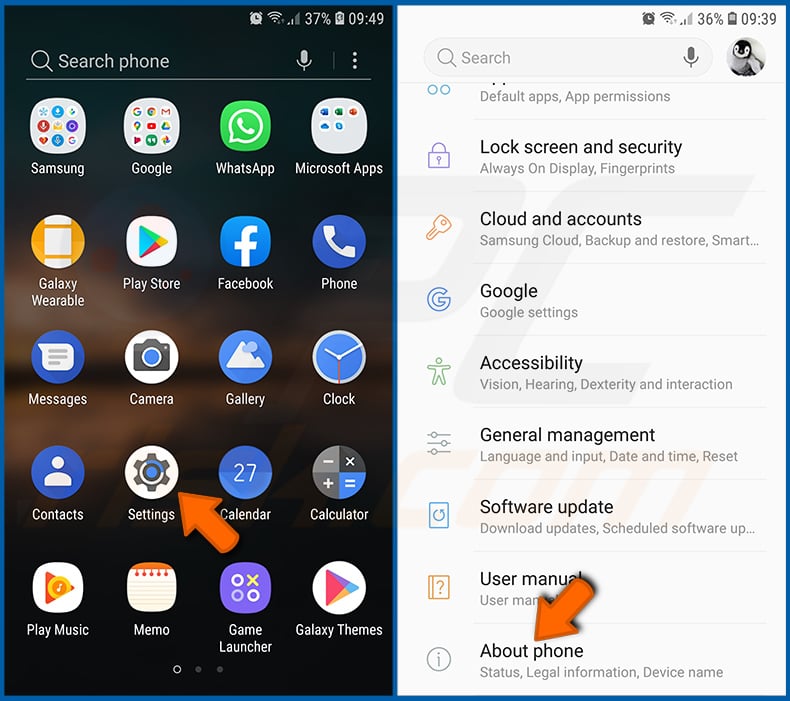
Go to "Settings", scroll down until you see "About phone" and tap it.
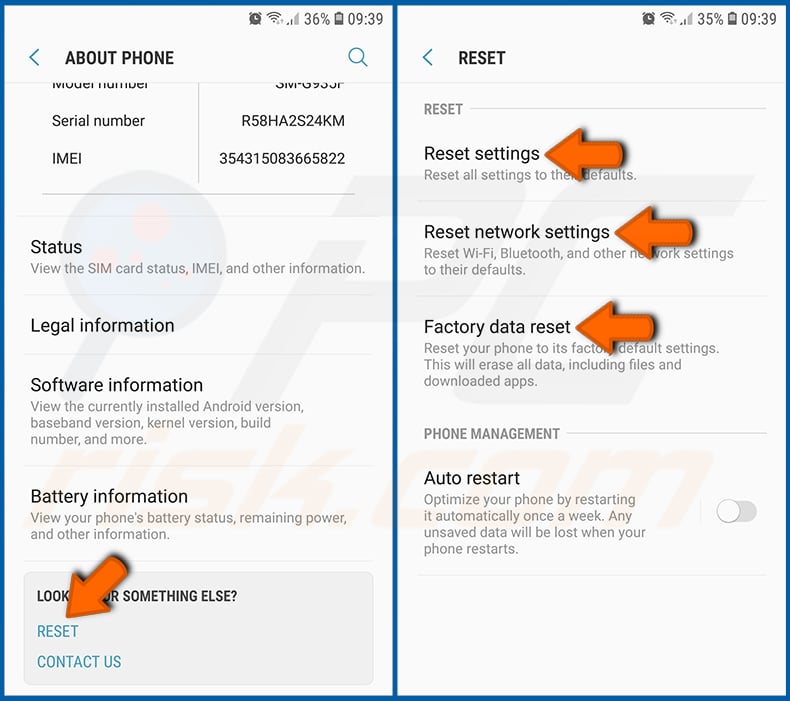
Scroll down until you see "Reset" and tap it. Now choose the action you want to perform:
"Reset settings" - restore all system settings to default;
"Reset network settings" - restore all network-related settings to default;
"Factory data reset" - reset the entire system and completely delete all stored data;
Disable applications that have administrator privileges:
If a malicious application gets administrator-level privileges it can seriously damage the system. To keep the device as safe as possible you should always check what apps have such privileges and disable the ones that shouldn't.
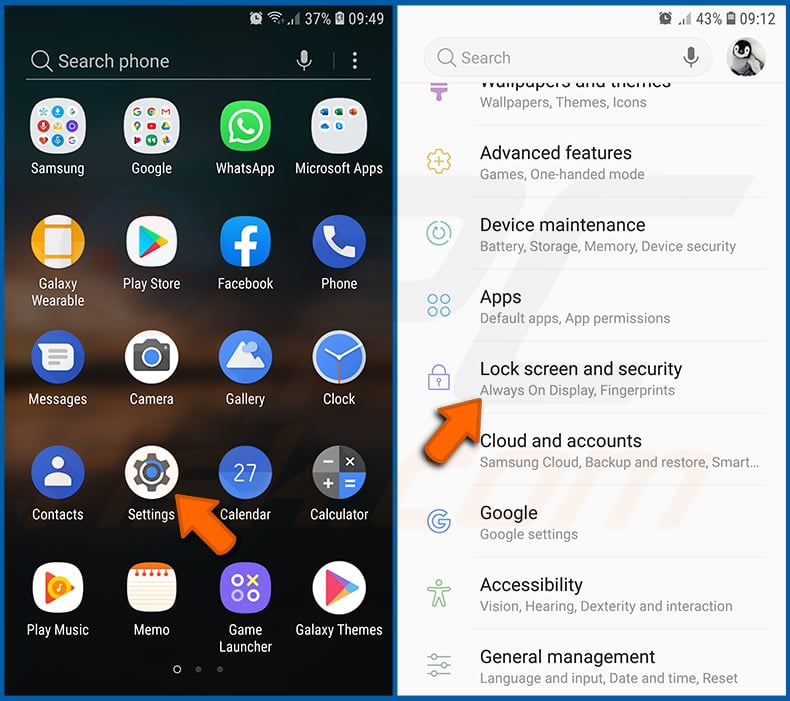
Go to "Settings", scroll down until you see "Lock screen and security" and tap it.
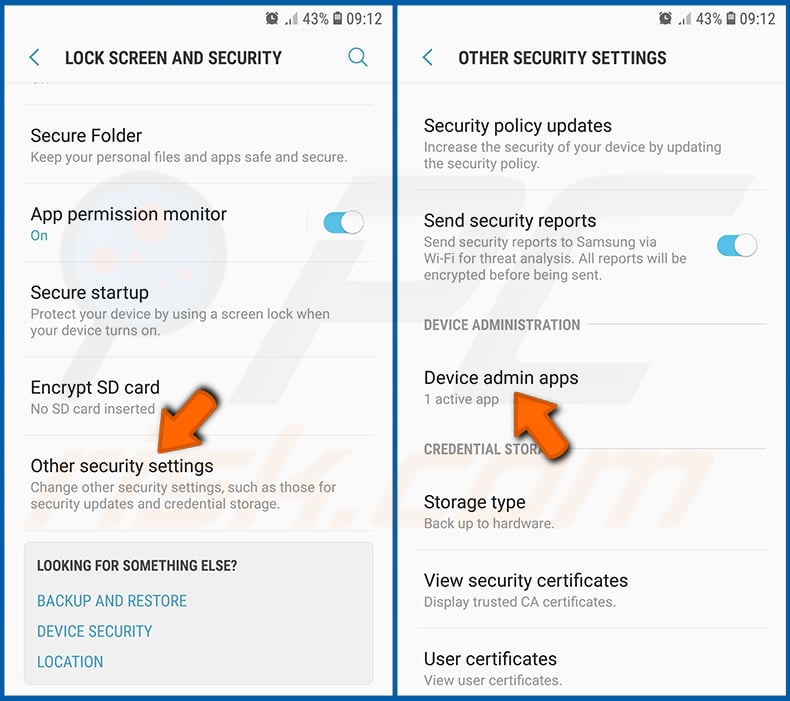
Scroll down until you see "Other security settings", tap it and then tap "Device admin apps".
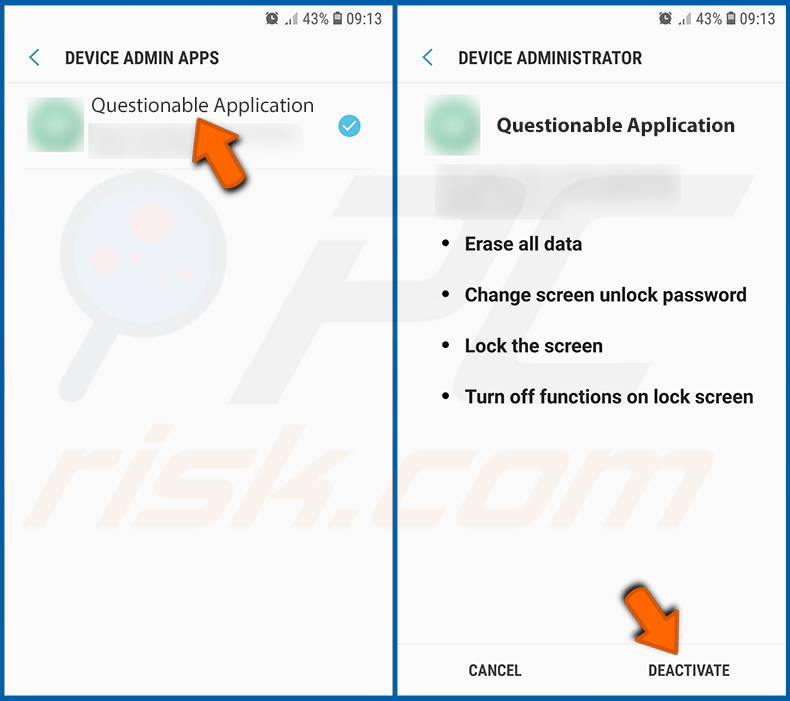
Identify applications that should not have administrator privileges, tap them and then tap "DEACTIVATE".
Frequently Asked Questions (FAQ)
My device is infected with Herodotus malware, should I format my storage device to get rid of it?
Formatting the device will remove Herodotus, but it will also delete all files and data on the drive. To avoid data loss, it is recommended to first try a trusted antivirus or malware removal program, such as Combo Cleaner.
What are the biggest issues that malware can cause?
Attackers can use malware to collect personal and banking data, break or corrupt systems, lock files with encryption, take remote control, plant further payloads, and more. This can lead to monetary loss, identity theft, data loss, and other issues.
What is the purpose of Herodotus?
Herodotus is an Android banking trojan that abuses Accessibility permissions to gain full remote control of infected devices. It steals credentials and 2FA (via fake overlays and SMS theft), exfiltrates app lists to target victims, injects input to complete fraudulent transactions, and maintains persistence.
How did Herodotus infiltrate my device?
Herodotus infects users when they sideload a dropper from a deceptive SMS link. The dropper installs and launches the malware, which often poses as a legitimate banking app.
Will Combo Cleaner protect me from malware?
Combo Cleaner can detect and remove nearly all known malware. However, advanced threats often hide deep within the system, so performing a full system scan is essential.
Share:

Tomas Meskauskas
Expert security researcher, professional malware analyst
I am passionate about computer security and technology. I have an experience of over 10 years working in various companies related to computer technical issue solving and Internet security. I have been working as an author and editor for pcrisk.com since 2010. Follow me on Twitter and LinkedIn to stay informed about the latest online security threats.
PCrisk security portal is brought by a company RCS LT.
Joined forces of security researchers help educate computer users about the latest online security threats. More information about the company RCS LT.
Our malware removal guides are free. However, if you want to support us you can send us a donation.
DonatePCrisk security portal is brought by a company RCS LT.
Joined forces of security researchers help educate computer users about the latest online security threats. More information about the company RCS LT.
Our malware removal guides are free. However, if you want to support us you can send us a donation.
Donate
▼ Show Discussion